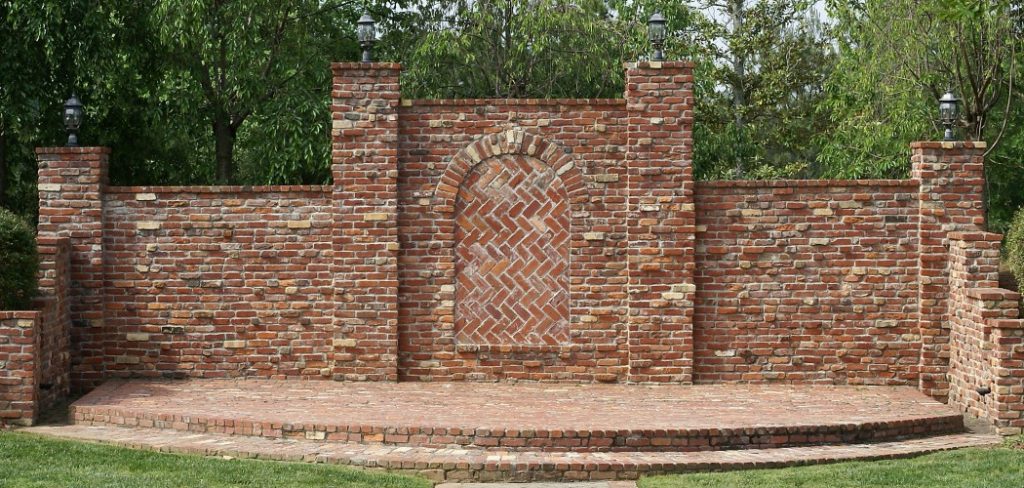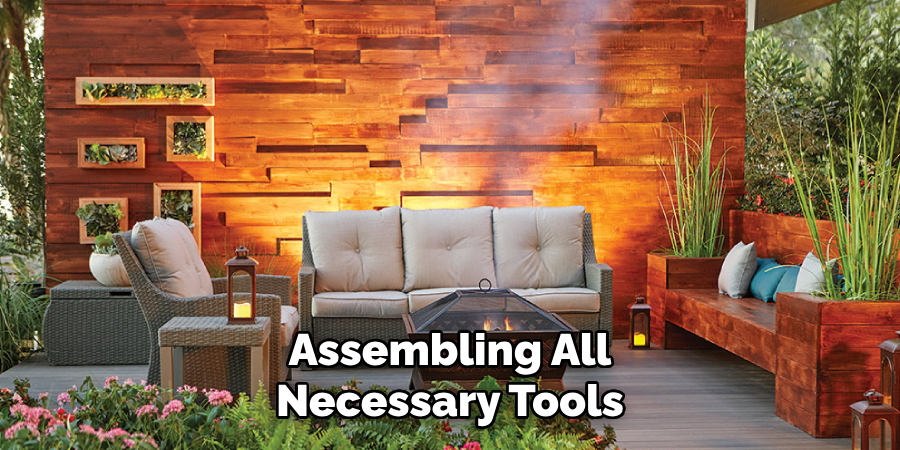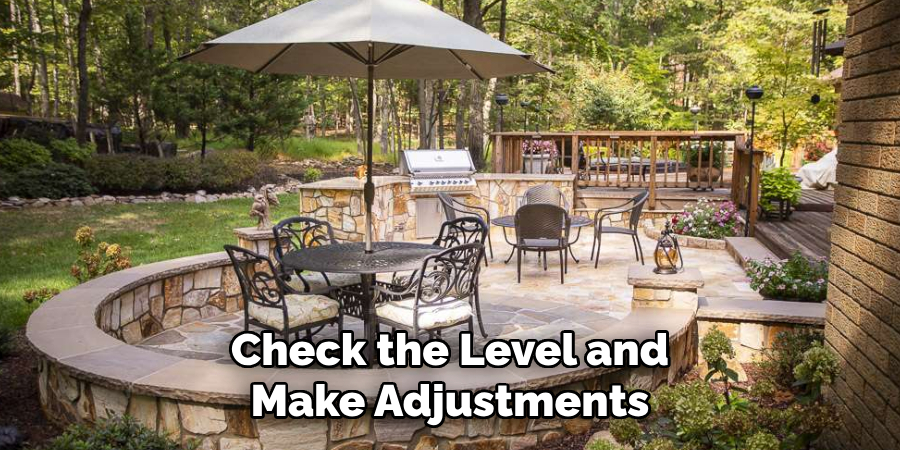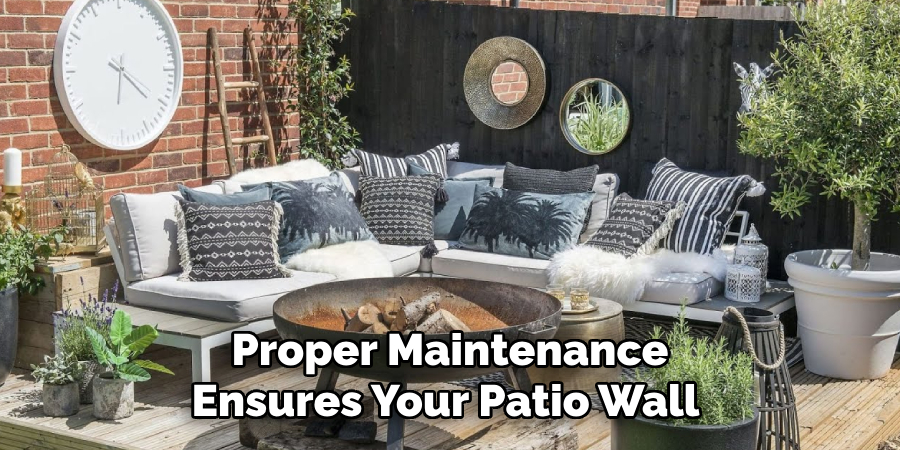Building a patio wall is a rewarding project that enhances the aesthetic and functional value of an outdoor space. Whether you’re a seasoned DIY enthusiast or a beginner looking to expand your skills, creating a patio wall can transform your backyard into a private retreat or an inviting entertainment area. This guide will walk you through how to build a patio wall, from selecting the right materials and tools to understanding foundational techniques, ensuring your patio wall is both sturdy and stylish. With careful planning and attention to detail, you can create an outdoor feature that will be enjoyed for years to come.

Benefits of Adding a Patio Wall
Adding a patio wall offers several benefits that can significantly enhance your outdoor space. Firstly, a patio wall provides an element of privacy, creating a secluded area where you can relax without being overlooked by neighbors. This privacy can be especially valuable in densely populated areas or neighborhoods with closely spaced homes. Additionally, patio walls act as a windbreak, making your outdoor area more comfortable and usable throughout various weather conditions.
They can also contribute to noise reduction, creating a more serene and peaceful environment. Furthermore, patio walls add aesthetic appeal by defining the space and serving as a backdrop for landscaping elements or outdoor decor, thus boosting the overall value of your property.
Planning Your Patio Wall Project
Before embarking on your patio wall construction, it is crucial to devote time to careful planning to ensure a successful outcome. Start by determining the purpose of your patio wall, as this will guide decisions regarding size, materials, and location. For instance, if privacy is your primary goal, consider how tall the wall needs to be and the best placement to block views. Assess the layout of your outdoor space to decide where the wall will have the most impact while maintaining the flow and functionality of your area.

Next, research local building codes and regulations. Some areas may have restrictions on wall height or require permits, so gaining this knowledge ahead of time is essential to avoid setbacks later in the project. You’ll also want to consider your budget, which will influence material choices and design complexity.
10 Methods How to Build a Patio Wall
1. Plan and Design the Wall
The foundation of any successful patio wall begins with detailed planning and design. Consider the purpose of your wall—will it serve as a decorative feature, a seating area, or a boundary? Choose the height, length, and style to suit your patio’s aesthetics. Sketch out a blueprint, indicating key features such as curves, steps, or integrated planters. Factor in local building codes and regulations, as some areas may require permits for certain types of walls. Proper planning ensures that the wall complements your patio and fulfills its intended function.
2. Select the Right Materials
Choosing the appropriate materials is critical for durability and style. Common options include bricks, natural stone, concrete blocks, or manufactured pavers. Each material offers unique aesthetic and functional benefits. For example, natural stone provides a rustic look, while concrete blocks are economical and easy to work with. Select materials that match your patio’s existing elements and can withstand your region’s climate. Additionally, purchase mortar, gravel, and other supplies required for construction. High-quality materials ensure the wall is sturdy and visually appealing.
3. Gather Tools and Equipment
Having the right tools on hand simplifies the construction process and enhances precision. Essential tools include a level, trowel, masonry saw, rubber mallet, tape measure, and a wheelbarrow. For more intricate designs, consider using a masonry chisel or angle grinder. If your wall will involve heavy lifting, rent equipment like a hand truck or block cart. Assembling all necessary tools beforehand helps maintain momentum and reduces interruptions during the build.

4. Prepare the Site
Preparing the site is a crucial step for ensuring a stable and level base. Start by marking the wall’s footprint with stakes and string lines. Clear the area of grass, roots, or debris and dig a trench along the marked lines. The trench should be approximately 6 to 8 inches deep and wide enough to accommodate the wall’s base. Compact the soil using a tamper to create a firm foundation. For added stability, consider laying a layer of gravel and compacting it before proceeding.
5. Lay a Solid Foundation
A strong foundation is essential for the longevity of your patio wall. Begin by pouring a 2- to 3-inch layer of crushed gravel into the trench and compact it again to ensure it is level and stable. Next, pour a concrete footing if required for your wall type and let it cure for at least 24 hours. The foundation must be level, as any unevenness will affect the stability and alignment of the entire wall. Take your time during this step to avoid future structural issues.
6. Start with the Base Layer
The first layer, or course, of the wall is the most important because it sets the tone for the rest of the structure. Begin by laying the first row of blocks, bricks, or stones directly on the prepared foundation. Use a level frequently to ensure each piece is perfectly aligned. If working with natural stone, arrange the pieces to create a snug fit. Apply mortar or adhesive, depending on your material choice, to secure the base layer. Take care to avoid rushing this step, as a solid base ensures the wall remains straight and stable.
7. Build Subsequent Layers
Once the base layer is set, start stacking the subsequent layers. Stagger the joints by offsetting the blocks or bricks to enhance stability and create a visually appealing pattern. Apply a consistent layer of mortar between each course, scraping off any excess with a trowel. For dry-stacked walls, focus on tightly fitting the pieces without mortar. Use a rubber mallet to gently tap blocks into place, ensuring alignment and a secure bond. Regularly check the level and make adjustments as needed to keep the wall straight.

8. Add Reinforcement if Needed
For taller or load-bearing patio walls, reinforcement is essential to ensure structural integrity. Incorporate steel rebar or wire mesh into the construction, embedding it in the mortar joints or the wall’s core. Reinforcement provides extra strength, particularly in areas with heavy winds or seismic activity. If using concrete blocks, consider filling the hollow cores with concrete to enhance durability. Reinforcing the wall prevents sagging, cracking, or collapse over time.
9. Shape and Finish the Wall
Once the wall is built, focus on shaping and finishing it to achieve the desired appearance. For walls made of natural stone, chisel or grind rough edges to create a smoother surface. Apply decorative caps or coping stones to the top for a polished look and additional protection against weathering. If your wall is made of bricks or blocks, consider applying a veneer or stucco finish for added texture and visual interest. Clean off excess mortar with a damp sponge before it dries to maintain a tidy appearance.
10. Seal and Maintain the Wall
The final step in building a patio wall is to seal and maintain it for longevity. Apply a weatherproof sealant to protect the materials from moisture, UV rays, and freeze-thaw cycles. Sealing prevents cracks, discoloration, and erosion, especially in regions with harsh climates. Regularly inspect the wall for signs of wear, such as loose stones or mortar cracks, and address them promptly. Proper maintenance ensures your patio wall remains strong and visually appealing for years to come.

Things to Consider When Building a Patio Wall
- Evaluate Your Budget – Establish a clear budget before starting your project, as costs can quickly escalate with material upgrades or design changes. Factor in expenses for materials, tools, permits, and potential labor. A well-planned budget helps avoid overspending and ensures the project remains financially feasible from start to finish.
- Research Local Climate Conditions – The climate of your region significantly impacts the choice of materials and construction techniques. Areas prone to freeze-thaw cycles require frost-resistant materials and additional structural reinforcement. Consider elements like humidity, rainfall, and wind in planning the durability and design of your patio wall.
- Plan for Drainage – Effective drainage is crucial to prevent water buildup behind the wall, which can compromise structural integrity. Design the wall to incorporate weep holes or drainage pipes as needed, and ensure the surrounding landscape directs water away from the base of the wall.
- Assess Maintenance Requirements – Different materials and designs have varying maintenance needs. Natural stone may require periodic sealing, while mortar joints can need repointing over time. Consider the long-term maintenance commitment when selecting materials and finishes to ensure your patio wall’s ongoing beauty and function.
Conclusion
Building a patio wall is a rewarding endeavor that combines aesthetics with functionality, enhancing your outdoor living space. By meticulously planning each step, from laying a solid foundation to selecting appropriate materials and considering environmental factors, you can create a structure that not only adds beauty but also withstands the test of time. Thanks for reading our blog post on how to build a patio wall! We hope you found it helpful and informative.
